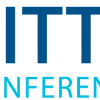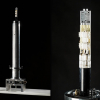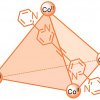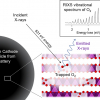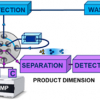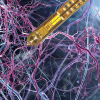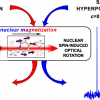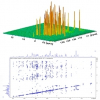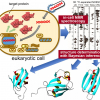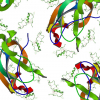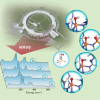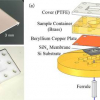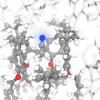Magnetic Resonance News
A new, ERC-funded project, HiSCORE, aims to develop a method for high throughput screening using nuclear magnetic resonance spectroscopy.
Multiparametric magnetic resonance imaging of the prostate is a promising tool for diagnosing prostate cancer.
A research team at Kiel University has developed new NMR methods for investigating paramagnetic complexes and supramolecular cages.
Using spatial encoding of multidimensional data, an ultrafast DEXSY experiment has been developed in which the data can be collected in a single scan.
Researchers have been able to fully identify the nature of oxidised oxygen in the important battery material, Li-rich NMC, using RIXS and 17O MAS NMR spectroscopies.
Bruker is supporting the international Covid19-NMR Consortium for structure–function and inhibitor binding investigations of SARS-CoV-2 RNA and proteins.
Applications are invited for these prestigious awards administered by the Association of British Spectroscopists (ABS) Trust.
The authenticity of one of the world’s most expensive edible oils, argan oil, can be tested with benchtop NMR spectroscopy.
A new research project in partnership between academia, companies and the Netherlands Forensic Institute to develop ways to chain analytical techniques together to gain complementary information.
An ultra-fine needle with an integrated chip combines an ultra-sensitive 300-µm nuclear magnetic resonance (NMR) coil with a complete NMR transceiver and can be used to probe brain physiology.
Researchers from the Faculty of Science at the University of Oulu have increased the sensitivity of the NMO spectroscopic method with promising applications for materials studies.
At the EUROISMAR 2019 meeting, Bruker and its scientific collaborators are presenting 1.2 GHz high-resolution NMR data that has been acquired using a new 1.2 GHz 3 mm triple-inverse TCI CryoProbe.
Nuclear magnetic resonance measurement and state-of-the-art computational science reveal protein structures in higher eukaryotic cells.
The ABS Trust is seeking applications for the Gordon F. Kirkbright bursary award and the new Edward Steers bursary, both open to early career scientists.
Researchers at MIT have developed a way to dramatically enhance the sensitivity of nuclear magnetic resonance spectroscopy using pulsed dynamic nuclear polarisation.
The synchrotron radiation-based technique, 57Fe nuclear resonance vibrational spectroscopy, has been used to probe the hydrogen bonds that modulate the chemical reactivity of enzymes, catalysts and biomimetic complexes.
A new electron paramagnetic resonance (EPR) method only needs a very small liquid sample to provide detailed information on the state of the metal ions in a metalloprotein solution.
The combination of magnetic resonance spectroscopy and functional magnetic resonance imaging have shown that changes in neurotransmitter levels in the visual cortex coincide with brain activity.
A new, freely available machine learning program combined with NMR spectroscopy to determine the exact location of atoms in complex organic compounds.

